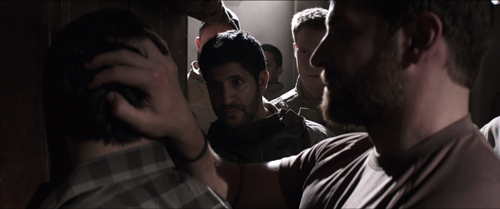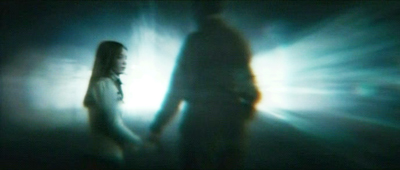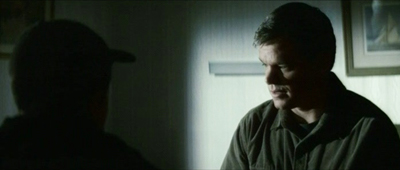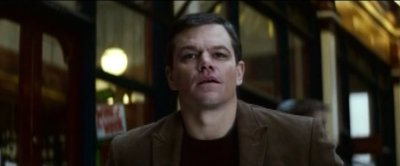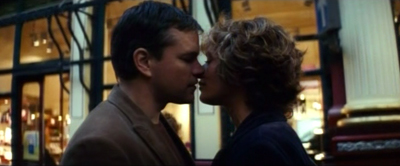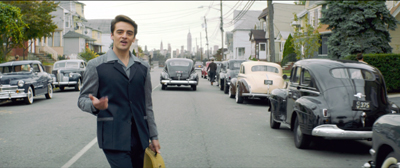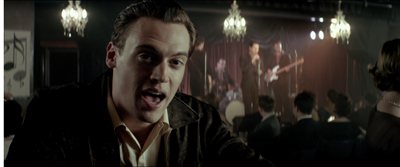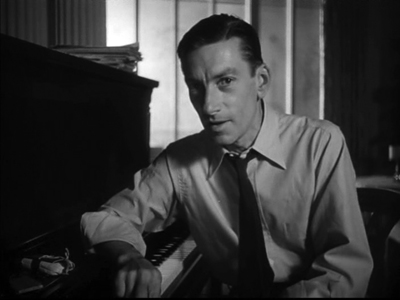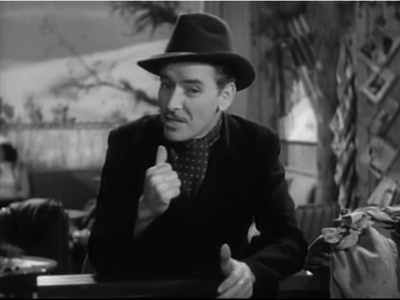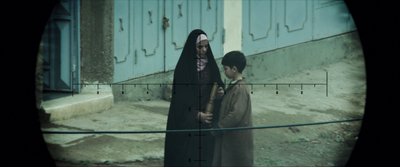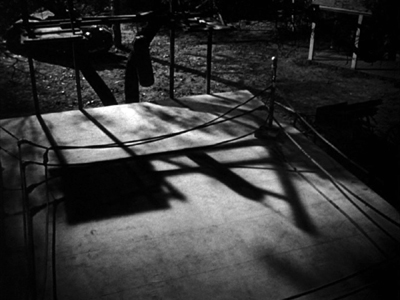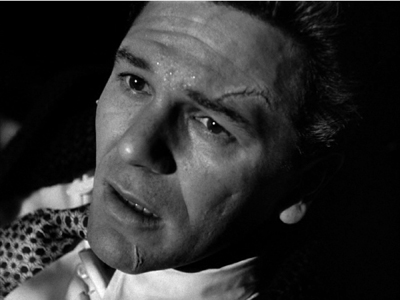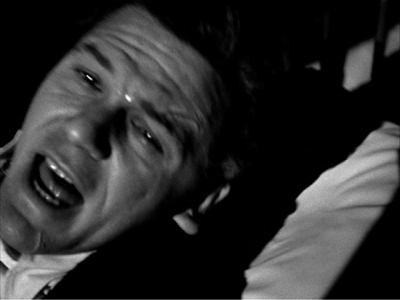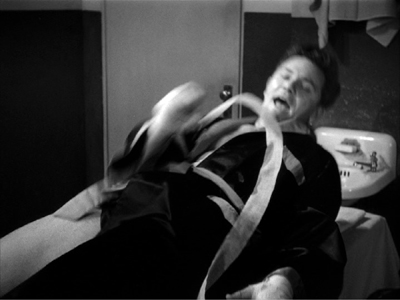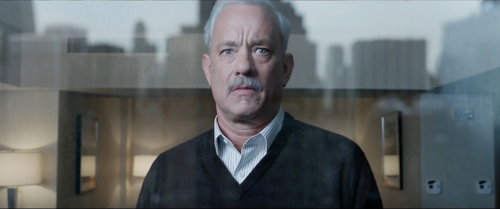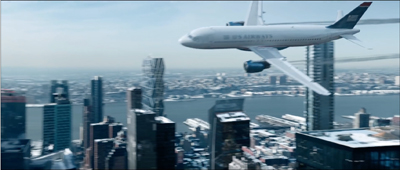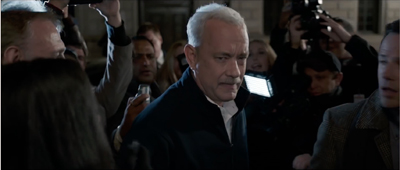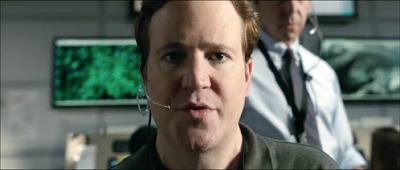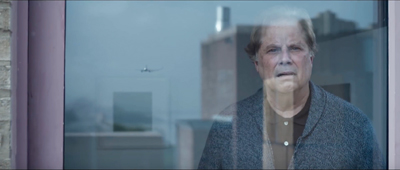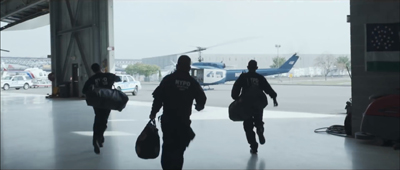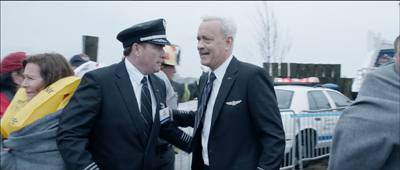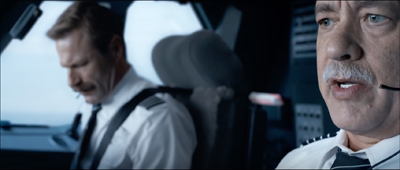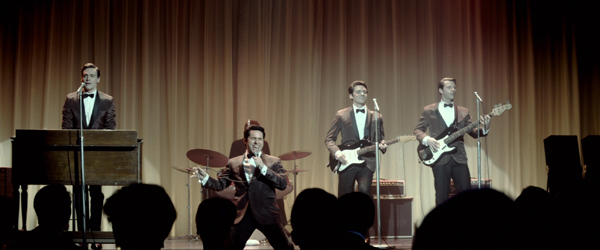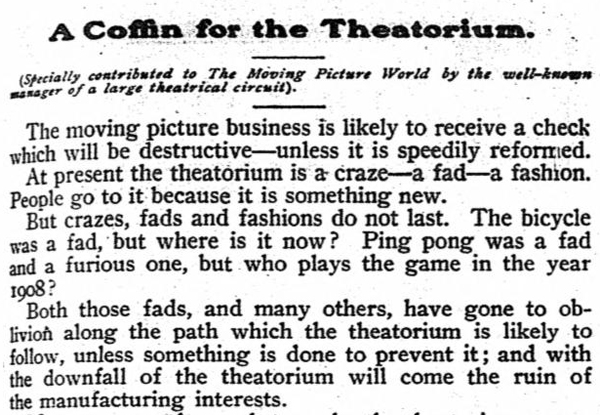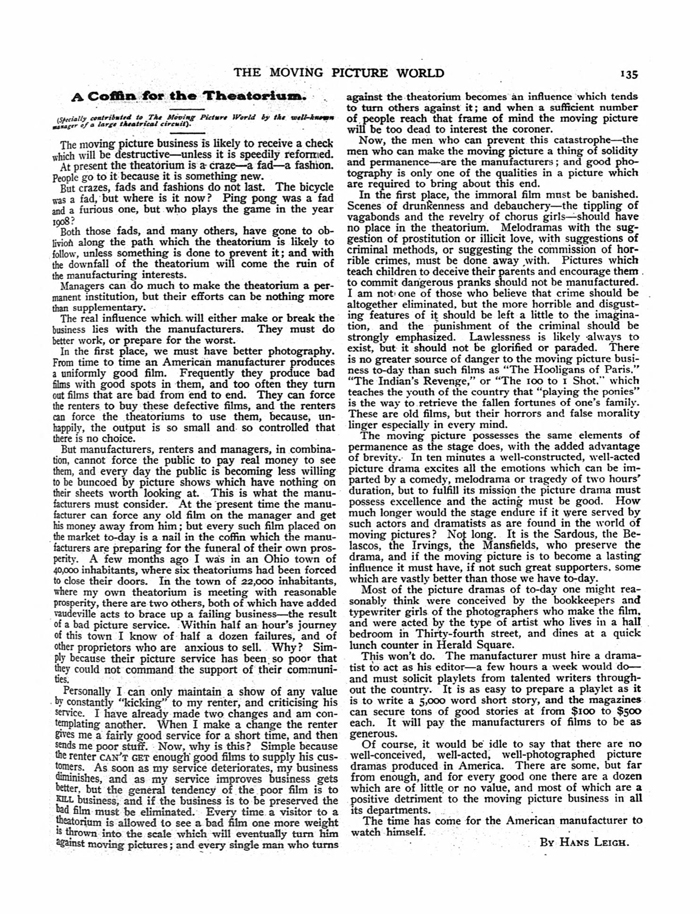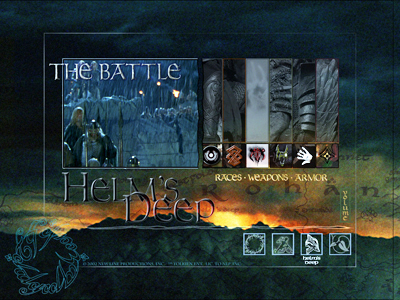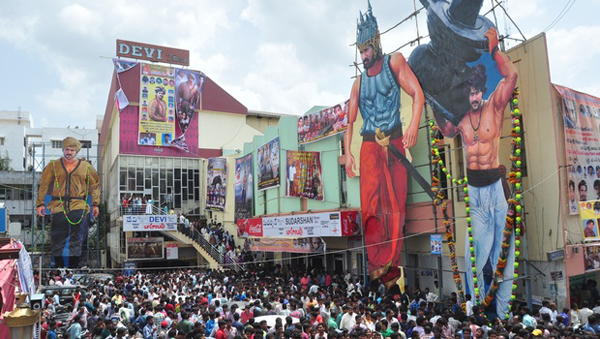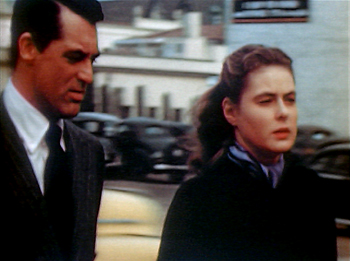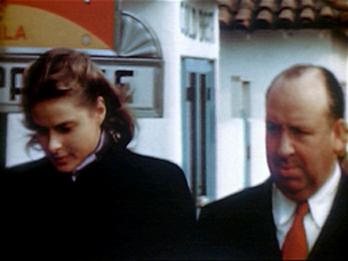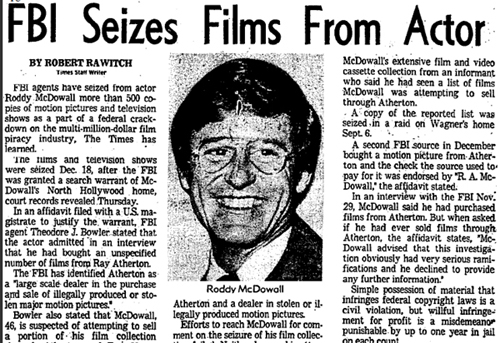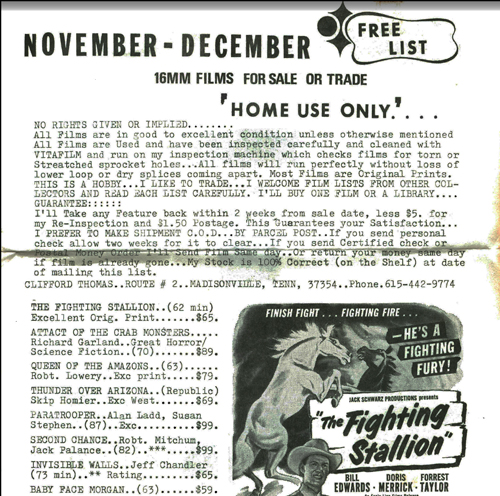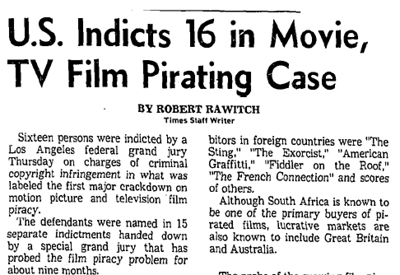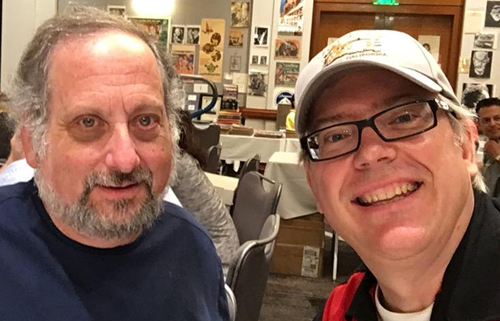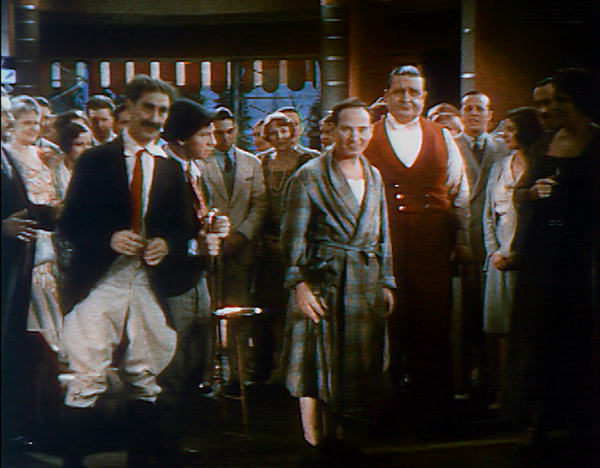Archive for September 2016
Replay it again, Clint: Sully and the simulations
Sully (2016).
What happens in the Forties doesn’t stay in the Forties. That’s one motto of the book I’ve just finished on Hollywood storytelling in the period 1939-1952. The argument is that several narrative conventions that crystallized in that era became part of the Hollywood tradition and continue to shape the films of today.
I say “crystallized,” not “suddenly appeared,” because in general terms every significant technique I pick out has precedents in earlier years of American filmmaking. Forties filmmakers didn’t invent flashbacks, voice-over narration, dream sequences, and the like. What Forties writers and directors did was consolidate those techniques into major norms. They went on to explore, sometimes with startling delicacy, the techniques’ range and power.
This pattern of scattered invention, followed by consolidation and refinement, isn’t uncommon in the history of technology. The computer mouse was devised by several companies and individuals, but it became ubiquitous in the 1980s thanks to Microsoft and Apple. What historians call the diffusion phase of change created a foundation for future development.
The same sort of diffusion sometimes takes place in cinematic form and style. For example, flashbacks in the 1930s were fairly rare and, except for The Power and the Glory (1933) and a few other films, fairly perfunctory. They simply filled in information that had been suppressed earlier, usually providing the solution of a mystery. During the 1940s, when flashbacks became more widely used, filmmakers were obliged by the pressures of competition to explore the technique’s finer-grained possibilities, as in Kitty Foyle (1940), Citizen Kane (1941), Lydia (1941), and many other films.
Once a technique becomes common, and refined in its usage, later filmmakers can treat it as a taken-for-granted option. It seems likely that the development of flashbacks in the 1940s, in both American and other cinemas, laid the groundwork for efforts like Hiroshima mon amour (1959). American filmmakers reworked flashbacks in creative ways in Petulia (1968), They Shoot Horses, Don’t They? (1969), and other films influenced not only by 1940s Hollywood but also by 1950s and 1960s European cinema.
Call me biased, but now nearly every mainstream movie I see seems indebted to storytelling strategies consolidated in the 1940s. Take Sully. In less than ninety minutes, it runs through a wide range of narrative techniques. The fact that we take them so completely for granted, and understand them so swiftly, indicates the stability of what we call a Hollywood movie. It’s kind of miraculous that filmmakers continue to find ingenious ways to fulfill norms that were locked into place seventy years ago.
Clint the classicist
American Sniper (2014).
Before I get to Sully, let’s pause on other recent films directed by Clint Eastwood. (Yes, spoilers will be involved.) They illustrate just how fully narrative techniques associated with the 1990s-2000s have become mainstream resources. Although those techniques are largely revisions of possibilities crystallized in the 1940s, most people know them in their modern guise. Today’s audiences are more familiar with the intricately out-of-order flashbacks of The Prestige (2006) than those found in The Killers (1946) or Backfire (1950).
Hereafter (2010), written by Peter Morgan, lays out three story lines. A French TV journalist, after nearly drowning during a tsunami, is convinced she has had a vision of the afterlife. A London boy yearns to contact his dead twin. An American construction worker, as a result of perilous childhood surgery, has acquired the gift—or, as he says, the curse—of being able to communicate with the dead. Each protagonist’s experiences are treated as separate blocks, crosscut ever more swiftly, until the three converge at a London book fair. The American helps the boy contact his brother, and by meeting the journalist, who has written a book about her research into the hereafter, begins to feel he can rejoin the world.
Hereafter is what I’ve called a network narrative: a plot centered on several more or less equally weighted characters with independent goals. Their fates intertwine by chance (or fate). In the 1930s and 1940s, network plotting tended to be confined to a locale or vehicle, typically in a Grand Hotel situation. More dispersed and numerous story lines emerged with Altman’s Nashville (1975), though even that has a circumscribed time limit. During the 1990s and 2000s, both spatially confined versions and more free-ranging ones became quite common in filmmaking across the world. Hereafter revives the strategy, tying the parallel plotlines to a conception of a realm after death.
Hereafter’s second primary expressive option involves flash-cut visions of the afterlife—blurry, distorted images that give only a glimpse of what Marie the journalist and George the medium “see.” These aren’t sustained, so that, for instance, when George relays to someone what the departed is saying, the film stays objective, simply presenting George’s report on what he’s being told.
This reticence about showing us the Beyond allows us to reflect that at one crucial moment, perhaps George is improvising the advice that he claims to be passing along to the dead boy’s twin.
In a final twist, George’s curse changes to something more like a gift. When he manages to arrange a rendezvous with Marie, his vision of the afterlife is replaced by precognition in this world. Now his vision, clear and sustained, shows him kissing her. Or maybe he’s gained access to normal wish fulfillment.
In either case, the Hollywood clinch gets re-motivated.
Jersey Boys (2014) presents the rise of the Four Seasons, with emphasis on the lead singer, high-pitched and high-strung Frankie Valli. Although the bulk of the film takes place in the 1950s and 1960s, it climaxes with the group’s reunion at the Rock and Roll Hall of Fame in 1990.
A common option would be to start at the reunion and then flash back to trace the group’s rise. Instead, the film roughly follows the layout of Marshall Brickman’s and Rick Elice’s book for the Broadway show. That presents the ups and downs of the group’s career chronologically, with each member narrating a block of scenes. In the stage version each block is labeled, cutely enough, with a season, from ebullient spring to doleful winter, with an extra-seasonal epilogue at the Hall of Fame.
The film version, also scripted by Brickman and Elice, doesn’t flag the seasons but does incorporate round-robin narrators. In the film’s opening Tony DeVito introduces us to the neighborhood and the formation of the group.
Later, singer-composer Bob Gaudio (above) and bass guitarist Nick Massi comment on stretches of the group’s rise and fall. They feel free to criticize each other, as when Nick says the trouble began well before Bob thought. These narrating moments are handled through to-camera address: each Season looks straight at us, explaining what’s happening, or just happened, or is about to happen.
Again, to-camera address can be found throughout film history, but the Forties made it salient by letting it bracket the entire film, often as the present-time frame for a flashback (Mr. Blandings Builds His Dream House, 1948; Edward, My Son, 1949; Young Man with a Horn, 1950; below). It’s rarer to have the narrator interrupt an ongoing scene, turn toward us, and break the fourth wall, but we do find it in My Life with Caroline (1941, below).
The Caroline device was revived in other films, notably Alfie (1966) and much more recently The Wolf of Wall Street (2013). The tweak that Jersey Boys introduces is the fact that the narrator uses the past tense to describe the scene he’s in–an occasional option in The Big Short (2015) too.
The tag-team narration in Jersey Boys doesn’t create sharply distinct blocks, in the Rashomon manner. Each singer’s segment roams pretty freely among other characters’ doings, so there’s no strong attachment to a single viewpoint. But some variations crop up. Frankie is the most minimal narrator. He never turns to the camera to address us, and we hear his voice-over comments only once in “his” stretch of the film. Perhaps that’s because he’s the character whose personal life is most crucial to the plot, and we see everything he’s up to. (Hollywood group protagonists often adopt a “first among equals” principle.) And at the final reunion, each of the quartet turns from the microphone to address us in quick succession, summing up their view of what’s happened. In Jersey Boys, as in Hereafter, some long-standing conventions are given moderately original handling.
American Sniper (2014) is the most linear and traditional of this batch, except for one tactic that becomes more important in Sully. The opening sequence shows sniper Chris Kyle perched atop a building scanning the Falluja neighborhood for enemy action. He sees a woman and child walking toward the Marine convoy, and she passes the boy what becomes visible as a grenade.
Chris must decide whether to fire. We then flash back to Chris as a boy shooting a deer and being told by his dad: “You got a gift.” There follow scenes tracing his childhood and young manhood, and his response to militant bombings of U. S. embassies: joining the Navy SEALS. At his wedding, he’s called to the invasion of Iraq.
This flashback, which consumes most of the film’s first “act” (ending about 25 minutes in), is followed by a return to the moment of decision on the rooftop. To prolong the suspense, the film replays Chris’s spotting of the woman and child with the grenade. He fires and kills both.
This tactic, of coming out of a flashback with a repetition of what initiated it, is yet another storytelling choice we find emerging in the Forties. One clear example is the framing of the long central flashback of Body and Soul (1947). The opening scene shows an eerily empty training camp before boxer Charley Davis wakes up from a bad dream and cries, “Ben!”
A fairly lengthy setup in the present follows before we get a long flashback tracing Charley’s career. At the conclusion of the flashback, again we see the shot of the camp, and again we see Charley awakening. A match-on-action cut takes us from that to the point where the frame story stopped: him lying on the table in his dressing room, just before the big bout.
The return to the camp has buckled the flashback shut in a way similar to the return to the Falluja roof in American Sniper.
The device of the reiterated flashback is developed more unusually in Eastwood’s J. Edgar (2011). The film follows a classic norm for the biopic: In old age, the central character recalls his or her life. Those flashbacks could be motivated as private memory, or as episodes recounted to someone. And in the Forties, that someone was often a reporter or transcriber, as in Edison the Man (1940) and The Great Man’s Lady (1942). If you count Citizen Kane (1941) as a fictional biography, then Thompson fulfills the role of listener.
In J. Edgar, the self-important Hoover has assigned FBI agents to take down his memoirs. Flashbacks inevitably follow. As the film goes on, the narration wedges in “unofficial” flashbacks, mostly scenes with Hoover’s life partner Clyde Tolson, and these are justified as purely private musings.
What’s interesting is that some material Hoover dictates proves unreliable. At the climax Tolson, who has read the manuscript, denounces it as a tissue of lies. We then get repetitions of key scenes from the dictation, all of which show that Hoover wasn’t involved in cracking the big cases he took credit for. The film decisively debunks Hoover’s myth that he was not only a superb administrator but also a heroic, hands-on field commander.
The lying flashback is yet one more minor convention of 1940s cinema. For those who haven’t seen the most important example, I’ll refrain from mentioning the title, but let Thru Different Eyes (1942) and Crossfire (1947) stand as examples. (At one phase of production, Laura, 1944, was planned to have a lying flashback too.) The replay emerges as a way to correct the first impressions.
In tracing precedents for these storytelling choices, I don’t mean to criticize them as unoriginal. The screenwriters of Jersey Boys and Hereafter, along with Jason Hall (American Sniper) and Dustin Lance Black (J. Edgar), are drawing upon models that have been circulating in Hollywood filmmaking for decades, and that became particularly salient in the 1990s and 2000s. These scripts are also revising the techniques in ways that seem to me original to some degree.
As for Eastwood, he’s said to “shoot the script,” so perhaps these more or less up-to-date narrative techniques are brought into his work through the screenwriters. But he’s also often called one of the last “classical” directors. Partly, I think, that’s a reference to his style: his fondness for establishing shots of buildings, shots of people arriving in cars or driving away, shot/reverse-shot dialogue exchanges, and unobtrusive Steadicam. In Jersey Boys, the musical numbers seem rather haphazardly put together, but Eastwood is cogent in developing action sequences, as the firefights in American Sniper show.
It’s not just a matter of style, though. To some extent the narrative strategies I’ve mentioned here have become part of today’s “classical Hollywood filmmaking.” Flashbacks, block construction, replays, to-camera address, network narratives, and bursts of subjectivity are so ingrained in contemporary filmmaking that we might want to think of Hollywood storytelling as a constantly expanding menu that discovers new flavors in traditional ingredients. The basic premises of classical narrative permit an indefinitely large range of variation, both large-scale and fine-grained.
Not a crash, a water landing
Most flashbacks present new information, either in a large block, as in Body and Soul, or in bits, as in J. Edgar. Other flashbacks present old information, mostly to remind us of something we’ve already seen or heard that’s relevant to the moment. Occasionally, a flashback is both a reminder, because it shows us something we’ve seen before, and a source of new information. It’s very common for mystery films and TV shows to use a flashback to an earlier scene in order to fill in whodunit, and how it was done.
Let’s call this reminder involving new information a replay. A replay goes beyond a simple repetition by showing the action in a new light—from a different character’s perspective, or including information that was omitted on the first pass. The latter happens in J. Edgar, when we see earlier scenes corrected to give credit to the actual agents involved.
Replays and other techniques of repetition are given a remarkably central role in Todd Komarnicki’s screenplay for Sully. It’s not surprising because the core incident, Chesley Sullenberger’s landing of a damaged airliner on the Hudson River, is said to have consumed only 208 seconds. There would have been many ways to tell this story; a straight linear account, as in United 93 (2006), must have been a tempting option. Instead, Sully concentrates on the heroic pilot, whose action was supported by comradeship with his co-pilot, and the collective spirit of the passengers, crew, and first responders. In order to add conflict, Komarnicki and Eastwood build up the drama of the National Transportation Safety Board’s inquiry into the landing. The members of the board are initially presented as skeptical antagonists, although by the end, they gracefully acknowledge that the plane could not have returned to the nearest airfields.
The emergency landing is presented in flashbacks, framed by the ongoing investigation. But the film opens with the plane crashing into Manhattan skyscrapers.
It’s revealed as Sully’s nightmare, which haunts him after the rescue. The sequence anchors us firmly in his consciousness; we’ll be more attached to him than to any other character. As an anxiety dream, it presents a sort of what-if version that retrospectively justifies his decision to land on the Hudson. But its emotional tenor reveals his consistent worry throughout the plot that the authorities will judge that he put the passengers’ lives at risk unnecessarily.
Later another version of this Manhattan crash plays out not as a dream but as a waking fantasy, as Sully looks out of a skyscraper window. The scene suggests that he’ll never be able to see this cityscape without imagining the catastrophic alternative scenario. The same fraught feelings crop up in another fantasy passage, when he imagines a TV commentator asking: “Sully: Hero or fraud?” It isn’t just the accusation from outsiders that worries him. He questions what he’s done too. It’s important that the film give Sully enough self-doubt to build our sympathy and to make his final vindication all the more deserved.
Having given us dream and daydream, the filmic narration also gives us memory, in the form of flashbacks to Sully’s younger days, when he fell in love with flying and graduated to testing aircraft in dangerous situations. These affirm his expertise while also showing the quiet determination that can seem a little dour. (He’s told by his flight instructor to smile more.) This serious older man was also a serious young one.
From the start, the Board’s inquiry sets up the need for simulations to check Sully’s decisions. The first set are computer-based, and Sully requests that pilots also execute simulations. The human simulations will become crucial points of conflict at the climax.
One of Sully’s phone calls to his wife back home triggers the first flashback to the fateful day of 15 January 2009. This is launched about 27 minutes in, marking the shift to what Kristin calls the Complicating Action section of the plot. We’re shown Sullly’s arrival at the airport, the assembling of the passengers, and the takeoff. Soon enough, a flight of birds hits and the plane is damaged. Sully and copilot Jeff Skiles radio the air control center.
At this point, our attachment shifts to the controllers, and we hear the pilots trying alternative options. Other aircraft in the area see the plane go down, and the controller is relieved to learn that the landing was successful.
Crucially, we aren’t in the cockpit throughout this first run-through of the landing. Although the film celebrates Sully, the narration initially shifts our attachment to others trying to help him. This tactic also allows the filmmakers to save the most dramatic version of the landing for later replay.
The second major flashback, triggered by Sully brooding in a pub, shows the rescue operation. There’s a replay of the plane’s descent, again refracted through observers. Some are eyewitnesses, but mostly we see coast guard people who leap into recovery mode.
We alternate those views with vignettes of the passengers evacuating, overseen by Sully’s apprehensive effort to make sure all survive. Even after the passengers have been taken aboard the rescue boats, Sully can’t calm down until he’s told that the tally shows that everyone is safe.
The end of the flashback, which I’d say constitutes the Development section in Kristin’s model, introduces the crucial motif of timing, which will be Sully’s defense at the last hearing.
We’ve registered the water landing from the perspectives of the air-traffic controller, of eyewitnesses on the ground, of the first responders, and of the passengers. But what were the 208 seconds like inside the cockpit? This will be the business of the film’s climax, and several versions of it will be presented.
At the final hearing of the NTSB, a public one, the Board members report on the computer simulations. Those indicate that the plane could have flown back to La Guardia or on to Teterboro for a safe landing. Then the Board, through video contact, shows pilots simulating the alternatives, instant by instant starting from the bird strike. These reenactments are a bit like Sully’s nightmare and daytime fantasy, in that they present grim alternative scenarios—hypothetical replays, we might say. Both confirm the computer’s conclusion that the water landing wasn’t necessary.
A fair amount of suspense has been built up by these reenactments. The audience hasn’t seen everything that happened in the cockpit during the crisis. How can these simulations be challenged?
Sully raises the crucial point that the pilots in the simulation had foreknowledge of what they were to do. (In cognitive-science jargon, they were primed.) In fact, the Board admits, the pilots were permitted to practice the maneuver several times. Sully requests that time be added to the simulation, as a way to reflect the real conditions of unexpected decision-making.
So the pilots run the simulations again with a 35-second lag. Both the La Guardia and Teterboro options now lead to crashes. Sully and Skiles are vindicated. Finally, we get a full-blown replay of the critical action in the cockpit, thanks to the Board’s playing of the flight-box recorder. We hear the pilots’ conversation while the film flashes back to show Sully and Skiles facing the crisis.
Thanks to editing, the 208 seconds from “Birds!” to safe landing gets expanded a little in this replay. (By my count, it runs about 330 seconds.) And we aren’t wholly confined to the cockpit visually, as we can trace the plane’s progress from outside. Basically, though, we’re attached to the two men, sometimes through optical POV shots. Although we saw the early phase of the pilots’ routine safety responses in the first long flashback, now we see the whole process, culminating in Sully’s decision to land on the Hudson.
What might have been a strenuous exercise in padding, replaying the crucial moment just to stretch the action out, becomes a strategic way to balance individual and collective effort. The first two long flashbacks stress the roles of the air-traffic controller, the crew, the passengers, and the first responders. In this respect the heroism is spread out, showing a collective effort to save the situation. Only at the climax does the film confirm what many witnesses have said from the start—that Sully deserves to be called a hero. The NTSB officials pay tribute to him as the x-factor, the crucial figure in the equation. But he demurs: “It was all of us.” The theme of group accomplishment is made tangible by the film’s play with plot structure and narration.
The replay flashback wasn’t unknown in silent film, and sound examples include The Canary Murder Case (1929) and The Witness Chair (1936). Nevertheless the replay becomes quite elaborate in the 1940s, with Mildred Pierce (1945) being a particularly intricate example. It’s clearly an idea circulating through the filmmaking community: Cukor wanted a replay for A Woman’s Face (1941) and Mankiewicz wanted one for All About Eve (1950). (He got one in the self-produced Barefoot Contessa, 1954.) An almost fussy example can be found in the British flashback film, The Woman in Question (1950). Since then, the replay has been a rich secondary resource for Hollywood. Its widespread revival, and repurposing, in modern cinema reminds me of a remark made by André Bazin.
Sometimes Bazin’s reference to “the genius of the system” is taken as praise for the Hollywood studio system as an economic enterprise. I don’t read it that way. I think he was referring to the fecundity of a particular storytelling tradition.
The American cinema is a classical art, but why not then admire in it what is most admirable, i.e. not only the talent of this or that filmmaker, but the genius of the system, the richness of its ever-vigorous tradition, and its fertility when it comes into contact with new elements.
Bazin gives as examples of such “new elements” the commentary on American society to be found in films like Bus Stop and The Seven Year Itch. In such films, “the social truth . . . is not offered as a goal that suffices in itself but is integrated into a style of cinematic narration.” Sully does much the same thing. Seizing on the bare incident of Captain Sullenberger’s landing and its reception by the public, the filmmakers have integrated it into a narrative pattern that is at once traditional and novel.
It’s this interplay of narrative convention and innovation I try to trace across a single period in Reinventing Hollywood: How 1940s Filmmakers Changed Movie Storytelling.
The citation of Bazin comes from “On the politique des auteurs,” in Cahiers du cinéma: The 1950s: Neo-Realism, Hollywood, New Wave, ed. Jim Hillier (Harvard University Press, 1985), 258.
I discuss network narratives in The Way Hollywood Tells It, pp. 9-103, and more extensively, drawing examples from world cinema, in “Mutual Friends and Chronologies of Chance,” in Poetics of Cinema, pp. 189-250. On this site, see this entry on Grand Hotel (1932), this one on Life without Principle (2011), this one on some examples from the 2000s, and another about Babel (2006). One from last winter compares network narratives to films with one or two protagonists. See also Peter Parshall’s book Altman and After (Scarecrow, 2012). Want to see a combination of network narrative and maniacal replays? That would be Vantage Point (2008), which I once intended to write about here before a trip to Asia deflected me. . . .
To-camera address in The Wolf of Wall Street is considered here. In another entry I discuss traces of the would-be replay in All About Eve. “Play It Again, Joan” considers purely auditory replays. To compare a replay with a film’s first iteration, you can check my analysis of Mildred Pierce and the video therein. I discuss a pseudo-replay in The Chase (1946); it’s weird, but that’s the Forties for you.
Other examples of modern assimilations of 1940s techniques are discussed in this entry on fragmentary flashbacks and this entry on Tarantino. And of course there’s the labyrinth of linkages we find in The Prestige. For other relevant entries, check the category 1940s Hollywood.
Jersey Boys.
The end of Theatoriums, too
Moving Picture World (February 1908), 135.
DB here:
Vis-à-vis the last post, all of three hours ago, Alert Reader and arthouse impresario Martin McCaffery sends the above.
Actually, it’s much in the spirit of current jeremiads: Movies and their theatoriums better shape up, or they’ll be finished–like bicycles and Ping-Pong.
History is so cool. Full text here and below. There’s also a 1908 rebuttal, in the spirit of movies-are-doing-just-fine-thanks, here. Both courtesy the prodigious Lantern.
It’s all over, until the next time
Our Little Sister (Kore-eda Hirokazu, 2015).
DB here:
The perennial Silly Season topic, The Death of Film, is back.
In June, Huffington Post‘s Matthew Jacobs announced “The death of Movies As We Know Them.” He laments the loss of “solid storytelling and bankable stars.” In August, Brian Raftery asked: “Could this be the year that movies stopped mattering?” The author argues that now movies are “Something to Do When the Wi-Fi’s Down.” Echoing the virality theme, Ty Burr announced that two albums, Beyoncé’s “Lemonade” and Frank Ocean’s “Blonde,” “came packaged with better movies than anything in theatres.” For Burr, the summer season confirmed that audiences are more interested in grazing among YouTube clips and luxuriating in eight-hour video serials than watching a feature film. “The two-hour movie, especially in its larger and more commercial form, is becoming a relic.”
Richard Brody eloquently replied to Raftery, noting Beyoncé’s debt to Julie Dash and Khalik Allah’s films. Brody has been around this block before, as I noted in a 2012 blog entry.
The cinema-is-dead complaint, Richard Brody helpfully points out, is now an established genre of movie journalism. In the last few weeks David Denby, David Thomson, Andrew O’Hehir, and Jason Bailey have in different registers sought to revive this quintessentially empty polemic. I’ve gone on about the tired conventions of film reviewing about once every year on this soapbox. (Try here and here and here and here; Kristin got in some licks too). For now I’ll just say that I’m convinced that the Death of Cinema (or Hollywood, or the Intelligent Foreign Film, or Popular Movie Culture, or Elite Film Culture) is simply a journalistic trope, like Sequels Betray a Lack of Imagination or This Movie Reflects Our Anxieties. In short: an easy way to fill column inches.
But after four years, maybe things really have deteriorated. So let’s get specific. What’s really going down the tubes? The theatrical side of the industry? Quality? Cultural cachet?
Movies, your best entertainment value
Bar area of Orange Cinema Club, Beijing.
Let’s look at some current evidence about the industry, thanks to the redoubtable Cinema research division of IHS Media Technology.
The newest symptom of cinema’s demise, according to many, is the rise of Netflix and other streaming platforms. Serial TV is attracting a lot of attention, true, but streaming has long relied on licensing feature films from studios, independents, and overseas companies. TCM and Criterion are launching FilmStruck as a new channel chock-full of classic films from Hollywood and elsewhere. Amazon and Netflix have also begun acquiring and financing features to guarantee a supply of those two-hour films that for some reason people still want to watch.
But what about movies in theatres? Actually, things are pretty robust. Despite everybody viewing at home and on the go, for many years theatre growth has been phenomenal. In 2015 the world added about 12,000 screens, hitting a new high: 153,163. Not counting all our “second screens” (and third), there are more movie screens now than ever before.
By the way, those of us, me included, who worried that the rise of digital exhibition would cause a drop in screens were wrong. Digital was a shot in the arm to theatrical exhibition, and it made 3D a viable platform. That format shows signs of growth, chiefly because of China, and now 16-20% of box-office grosses come from 3D screenings.
In keeping with the expansion of exhibition, for the last decade, the global box office has risen steadily. Almost every year sets a record. The new height is $37.7 billion for 2015, and it seems likely that 2016 will beat that.
As for number of admissions, 2015 also set a record: 7.4 billion, a jump of 13% over 2014. This is a bit more than one ticket for every man, woman, and child on earth. The first half of 2016 is ahead of the same period last year.
Of course revenues don’t equal profits. Jacobs is especially concerned that some big films have been losing money in their domestic theatrical run. But most films lose money in that run. For a long time, ancillary markets (DVD, overseas cable, merchandising, etc.) made up for the deficits. More and more, overseas theatrical is helping in a big way. In a recent rundown, of the summer’s top twenty hits, a print story in The Hollywood Reporter indicates that foreign grosses outweigh US/Canadian ones in most cases, and sometimes by a lot.
For example, big as Captain America: Civil War was in the US, 65% of its $1.1 billion haul was due to the offshore market. X-Men: Apocalypse got half a billion theatrical, 71% of which came from the international audience. Ancillaries will still need to kick in, given the mammoth budgets of films like these, but those ancillaries piggyback on theatrical visibility. As ever, the big pictures pay for a lot of lesser films.
Moreover, so many costs are buried or dispersed in overhead, debt service, tax incentives, deferred payments, far-fetched studio expenses, and the like that it seems hard to know what final profits really are. Nor will we know what, if any, profits are yielded by films from countries with subsidized film industries.
There are many things to worry about in the exhibition business, but it doesn’t seem on the verge of collapse. Let’s keep a sense of proportion. Here is what the death of “our cinema” might really look like.
Theatre admissions fall 45% over six years. Studio profits fall 80% over the same period. One-sixth of theatres close. Major overseas markets refuse to remit the earnings of Hollywood films. Audiences turn increasingly to other leisure activities.
This was the state of the American film industry in 1953. The prosperous war years, culminating in the all-time admissions high of 1946, were over and the studios went into sharp decline. Thanks to the 1948 Supreme Court “Divorcement Decree,” the studios lost control of their theatres, relinquishing not only valuable showcases for their product but also millions of dollars of prime real estate.
Yet as we know, 1953 didn’t end cinema, not even American cinema. As the old studio system waned, a new one eventually replaced it. In the process, Hollywood continued to make major films. Filmmaking abroad—in Asia, Europe, and South America especially—flourished. Film festivals sprang up, and a new young public proved eager to watch movies from a variety of cultures. Avant-garde and documentary movements gained traction, partly because of the widespread dissemination of 16mm.
No one, so far as I can tell, predicted the end of cinema, or Hollywood, because of the 1947-1953 crisis. That person would have looked very foolish. Things today aren’t nearly so severe.
Long, hot summers
 What about quality? A. O. Scott points out that the way to quell fears for the End of Good Cinema is to go to a film festival. It’s good advice that we’ve given as well. Richard Brody, who has I think seen everything, responds to Raftery by reminding us of many valuable films that the naysayers ignore. Another way to remain calm is to look at a little history.
What about quality? A. O. Scott points out that the way to quell fears for the End of Good Cinema is to go to a film festival. It’s good advice that we’ve given as well. Richard Brody, who has I think seen everything, responds to Raftery by reminding us of many valuable films that the naysayers ignore. Another way to remain calm is to look at a little history.
Things often seem grim at summer’s end. Let’s go back fifty years, to the summer of 1966. In those days, the blockbusters and prestige pictures were saved for fall and winter. Indeed, the blockbusters were largely the prestige pictures, the adaptations of novels and plays. The big grosser of the year was Hawaii, released in October. Two others were The Bible: In the Beginning (September) and A Man for All Seasons (December). But two of the top-grossers hit the jackpot in the summer: Who’s Afraid of Virginia Woolf? (July) and Lt. Robin Crusoe, USN (June).
Pause on this last title. Lt. Robin Crusoe, USN was an indisputably lowbrow hit, a Disney comedy starring Dick Van Dyke. The fact that it earned $10.1 million (about $75 million today) might well have set critics worrying about American tastes. Worse, they might have concluded there was no hope, because from 1950 to 1970, twenty Disney films appeared in the annual top five. That record includes not only animated classics but In Search of the Castaways, That Darn Cat, and Darby O’Gill and the Little People–enough to make intellectuals despair of American moviegoers. Robin Crusoe‘s summer success might have seemed another sign of End Times.
Summer 1966 also saw The Ghost and Mr. Chicken, Fantastic Voyage, the remake of Stagecoach, a Bob Hope comedy, the low camp of Batman, and the high camp of Modesty Blaise. The 1966 counterpart to our spate of superhero sagas was a cycle of spy movies, somber or spoofy. The summer yielded Blindfold, Arabesque, and even The Man Called Flintstone. Along with these came Nevada Smith, Khartoum, What Did You Do in the War, Daddy?, This Property Is Condemned, and Wild Angels.
Some of these are well-remembered, mostly by viewers exposed at an impressionable age. For prestige there was and remains Virginia Woolf. For auteurists, there was Three on a Couch and Torn Curtain, and perhaps Modesty Blaise. As for the rest, most were and are still decried as junk.
Things were not looking good for American cinema. The Sound of Music had just won the Best Picture Oscar, a middlebrow shot across critics’ bow, and Pauline Kael was turning angry firepower on the massive threat posed by The Singing Nun. In the summer, the Times lambasted Hitchcock and Jerry Lewis. As far as I can tell, the follow-ups to the Bond boom pleased hardly anybody.
In sum, we forget just how godawful summer movies can be, year in and year out. The few we remember after Labor Day bob up from a river of sludge. We should be grateful for Indignation, Finding Dory, Lights Out, The Shallows, Hell or High Water, Don’t Breathe, The BFG, Kubo and the Two Strings, and probably half a dozen others I haven’t seen. (But not Jason Bourne, which I have.) Ben-Hur wasn’t as terrible as I’d been led to believe.
And of course, everybody’s pumped for the fall, for Snowden and The Arrival and The Birth of a Nation and La La Land and Manchester by the Sea and all the rest. 1966 critics were looking forward as well, but to what? Not only Hawaii, The Bible, and A Man for All Seasons but also Is Paris Burning?, Grand Prix, Any Wednesday, The Sand Pebbles and more spy movies (Gambit, The Quiller Memorandum). Not so exciting by our standards; Big Pictures were more square then.
True, also coming up in the fall of ’66 were The Fortune Cookie, Seconds, A Funny Thing Happened on the Way to the Forum, Fahrenheit 451, The Professionals, Loves of a Blonde, and Blow-Up. But even then some critics stayed unhappy. Kael denounced Blow-Up, and Vernon Young intoned: “The party’s over. . . . Another phase of film history, in many ways the most creative, is drawing to a close.” Sound familiar?
Conversation starters and stoppers
End-of-movie writers argue that pop music and Quality Television are usurping the cultural place of film. But I’m skeptical, because I don’t think film is playing in the same arena.
Odd as it sounds, film has never been popular on the scale of other mass media. Before TV, radio listeners far outnumbered film audiences. Via radio and records, a hit tune reached more people than nearly any movie. Even today, radio audiences are surprisingly big. Nielsen reported in 2014 that just in the 18-35 age group, 65 million people listen to radio broadcasts each week. That’s nearly three times the average number of all viewers who attend movie theatres in a week.
Once TV came along, it became another truly mass medium. 73 million people, over a third of the US population, watched the Beatles on Ed Sullivan in 1964. TV is still the big game. More than 20 million people watch The Big Bang Theory each week. It’s reported that 8.9 million people watched the season finale of Game of Thrones in original cablecast, and 23 million in all its iterations. Yet, again, about 23 million people see all the movies playing in a given week.
The plain fact is that visiting a theatre to see a movie has been, throughout most of American history, a middle-class pastime. It’s relatively expensive, and getting more so. It’s not quite niche, not as rarefied as theatre or concert music or novels, but still not on the scale of other media. We ought to expect that memes will spread faster and more pervasively in pop music and television platforms.
Our critics are concerned that films aren’t part of what Raftery calls “the pop-cultural conversation.” “What in popular culture got people excited or even interested over the last few months?” asks Burr, going on to worry that movies didn’t do so. This is a strange criterion for judging films. Hula hoops, Rubik cubes, Chia pets, and Donald Trump’s coiffure have all been part of the cultural conversation. Some good films excite lots of people, and some don’t (partly because those people don’t know of them). And of course many people got excited by films Burr and Raftery considered bad, like Suicide Squad. Excitement may not be a great standard for excellence.
The cultural-conversation gambit suggests that mere popularity needs to be accompanied by a special jolt, the hum of nowness, the throb of hipness. Financially successful films like The Jungle Book or Finding Dory don’t give off much buzz. Where does that special ingredient come from? Apparently, now, the Netizens. It’s natural that critics, who are assigned to surf the waves of mass tastes, would identify important art with what’s trending on Facebook. It’s their job to hop on what’s hot.
Or in truth, help make it hot. When critics treat what’s buzzy as valuable, they agree with marketers, and cooperate with them. How many critics who loved The Dark Knight had been prompted by the campaign that played up “Why So Serious?” and other memes that publicists thought would stick? Kristin has documented how The Lord of the Rings marketers set the agenda for journalists by means of junkets and Electronic Press Kits (above), while wooing fans with carefully judged opportunities to participate online (a “pop-cultural conversation,” for sure). The typical big film is positioned by the marketing campaign, and even unanticipated responses, especially if the film is strategically ambiguous, can feed ticket sales.
The People don’t start the cultural conversation; they react to what they’re given. The conversation is started by the studios, and they try to channel it. They generate the “controversies” about making the protagonists of Star Wars Episode VII: The Force Awakens a woman and an African American man. The critics pick up the story. (Remember: column inches.) Viewers dutifully enter their opinions on blogs, tweets, and comments columns–which the critics then re-spin. As Brody points out of Quality TV, it’s all about expanding discourse, indefinitely. Criticism begets “comments” which beget chitchat. This is less a conversation than a perpetually chattering flashmob.
A side note: I wonder if making cultural buzz a criterion of worthwhile cinema doesn’t owe something to the influence of Pauline Kael. She sent contradictory signals on this score, worrying that audiences were too easily bought off; the industry jollied them into accepting junk as fun. But she thought that one reason to like, say, Bonnie and Clyde was the fact that it was “contemporary in feeling.” It brought into movies “things that people have been feeling and saying and writing about.”
For a moment let’s accept the assumption that worthy movies have some broader cultural impact. How could we measure that? I suggest the Tagline Test. A movie enters the culture when a line becomes instantly recognizable. At its best, the tagline applies to an immediate situation. You step into a startling new setting and tell your friend you don’t think you’re in Kansas any more. You talk about your boss making you an offer you can’t refuse. You’re bargaining and you say, “Show me the money.” TV gives us plenty of catchphrases, of course. (“You rang?” “Not that there’s anything wrong with that.” “Don’t have a cow, man.” “That’s what she said.”) This is one symptom of a show’s buzziness.
When I came up with the Tagline Test, I thought it supported the doomsayers’ diagnosis. I couldn’t think of many memorable lines from films after the 1980s. Had TV taken over the traffic in catchphrases? Crowdsourcing among two fairly diverse populations came up with a big set. Here’s a sample:
Hasta la vista, baby. Houston, we have a problem. That’ll do, pig; that’ll do. I drink your milkshake. The Precious (enunciated in a high voice). With great power comes great responsibility. Stop trying to make fetch happen. She doesn’t even go here. Stay classy. That escalated quickly. The first Rule of Fight Club… 60% of the time, it works every time. Little golden-haired baby Jesus in the crib. Schwing! Coffee is for closers. King of the World! Stay alive; I will find you.
The Big Lebowski is a virtual encyclopedia of them: The Dude abides. Obviously you’re not a golfer. That rug really tied the room together. Nobody fucks with the Jesus. So too Napoleon Dynamite: Whatever I feel like I wanna do GOSH! I’m pretty much the best in the world at it.
Maybe you don’t agree that these are all equally common; I didn’t know about the Mean Girls and Napoleon Dynamite ones. But all I need to show is that recent movies have entered the “cultural conversation” quite literally. Maybe it just takes months or years for movie taglines to replicate in everyday life. Anyhow, those who want movies to get all buzzy don’t have to worry. With Oscar season upon us, the frenzy will begin. In fact it already has, with Nate Parker’s The Birth of a Nation.
Who’s we?
 In talking about “our” cinema, I’ve been too glib, though this angle fits with an assumption of the death-knoll critics (“Movies as We Know Them”). Of course, Jacobs, Raftery, and Burr all acknowledge that Hollywood isn’t making movies just for us; it’s a world industry. People elsewhere (many recently arrived in the local equivalent of the middle class) seem keen to participate in American popular culture, with fashion, music, TV, and websites. Hollywood entertainment, lame as it often is, is part of being cosmopolitan.
In talking about “our” cinema, I’ve been too glib, though this angle fits with an assumption of the death-knoll critics (“Movies as We Know Them”). Of course, Jacobs, Raftery, and Burr all acknowledge that Hollywood isn’t making movies just for us; it’s a world industry. People elsewhere (many recently arrived in the local equivalent of the middle class) seem keen to participate in American popular culture, with fashion, music, TV, and websites. Hollywood entertainment, lame as it often is, is part of being cosmopolitan.
Still, maybe it’s time to admit that we don’t own Hollywood. Maybe we never did, but it seems clear that with globalization “our” popular cinema is becoming something else–not exactly “theirs,” but not wholly ours either. Now You See Me 2 may have attracted only mild interest here: little cultural chitchat, except maybe among magicians, and $65 million box office (less than Lt. Robin Crusoe, USN). But it garnered $266 million internationally. Nearly a hundred million of that came from China, perhaps partly owing to long stretches set in Macau and short stretches featuring Jay Chou Kit-lun. And the director was Asian-American Jon M. Chu.
Now Lionsgate announces a Now You See Me spinoff, a feature co-production with China that will use local stars. So who owns this franchise? “Us” or “them”? If it disappoints us and pleases them, how does that mean that movies are so over? Maybe other countries’ cultural conversations are pulsing with talk of the Four Horsemen (one of whom is a woman).
It’s long been obvious that other film industries create their own versions of Hollywood. Europe, India, and Hong Kong have done it for decades. Current Chinese hits borrow from “our” rom-coms, action pictures, and comedies. In Stephen Chow Sing-chi’s The Mermaid, you can watch a blockbuster premise coming unglued. It’s a mixture of sentiment, message, slapstick, and bad taste; Hollywood twisted up in Chow’s characteristic funhouse mirror.
This won’t stop. One of the most astonishing and puzzling facts of contemporary cinema gets almost no press, maybe because it contravenes the death-of-film narrative. Over the last ten years, there has been a huge rise in the number of feature films.
In 2001, the world produced about 3800 features annually. The number passed 4000 in 2002, passed 5000 in 2007, and passed 6000 in 2011. In 2014, IHS estimates, over 7300 feature films were made in the world. There are now fifteen countries that produce over 100 features a year. As a result, only 18% of the world’s features come from North America. The boom took place despite the rise of home video, cable, satellite, DVD, Blu-ray, VOD, and streaming. And it happened despite the fact that American blockbusters rule nearly every national market. This may be a bubble, or it may be genuine growth. In any case, we ought to investigate the reasons that a great many people around the world stubbornly persist in making two-hour films. They don’t appear to care if We sense a summer slump.
While I was preparing this entry, Kristin and I went to Our Little Sister, Kore-eda Hirokazu’s 2015 film about three sisters abandoned, first by the father, then by their mother, and raised by the moderately stern oldest sister. The plot follows what happens when the trio takes in their half-sister after her mother dies. This is a movie that’s bereft of villains and almost totally lacking in conflict. The sisters’ misjudgments and flaws cause them problems, and sometimes they quarrel, but mostly we see decent people trying to lead happy lives, and largely succeeding. Compared to Kore-eda’s debut, Maboroshi (1995), it’s pictorially rather conventional. (That damn sidling camera.) But its episodic, open-textured plot, its quiet depiction of changes across seasons and years, and its casually serene vision of family and community make it one of the most enjoyable and moving films I’ve seen this year.
Based on the graphic novel Umimachi Diary, the film participated in Japan’s “cultural conversation.” It’s certainly a mainstream commercial movie, of a sort that Japanese studios have turned out for decades. It won solid attention on the festival circuit too. It earned a 92% rating on Rotten Tomatoes, up there with Kubo and Hell or High Water. But such a reserved, sentimental film will never get the edgy buzz that our doomsayers want. Sentiment, after all, is anathema to our dominant mode of consuming pop culture, that of cool, ironic knowingness.
I don’t want to oversell Our Little Sister: Kore-eda is no Ozu. But this film and many others remind us that worthwhile films are still made, and released, and available outside the circus tent of Entertainment Weekly cover stories. (In this case, Americans’ thanks should go to Sony Pictures Classics, now celebrating its 25th anniversary.)
In short: Forget the zeitgeist; it likely doesn’t exist, apart from marketers’ dreams and journalists’ deadlines. Forget the cultural conversation; there’s not only one. Seek out the films that matter to you, and not “to us.” Stay classy!
Thanks to correspondents on two listserves, that of Communication Arts film folk and that of the Art House Convergence. A great many people made many suggestions, with the inevitable duplication, so thanking everyone by name would be protracted. But you know who you are.
My information on worldwide production and exhibition comes from issues of IHS Media & Technology Digest and Cinema Intelligence Report. Special thanks to David Hancock, Director of IHS Cinema division. Pamela McClintock’s “Summer Anxiety Despite Near-Record Numbers” in the 16 September Hollywood Reporter print edition contains the top-twenty film list I mention; that chart isn’t included in the online version.
On the summer 1966 US releases, see The Film Daily Yearbook of Motion Pictures 1967 (Film Daily, 1967), 144-168. I charted the year’s top-grossers from Susan Sackett, The Hollywood Reporter Book of Box Office Hits (Billboard, 1996).
My quotations from Pauline Kael come from her Bonnie and Clyde review reprinted in Kiss Kiss Bang Bang (Atlantic Monthly Press, 1968), 47. My quotation from Vernon Young is the opening of his “The Verge and After: Film by 1966,” in On Film: Unpopular Essays on a Popular Art (Quadrangle, 1972), 273.
It’s probably irrelevant to mention that both Scorpio Rising and The Brig were released, in some sense, in summer 1966.
P. S. 18 September 2016: And see the practically real-time followup. Remember when blogs were like Twitter is now?
12,000 tickets are sold for premiere screenings of Baahubali (2015) in Hyderabad, India.
Reeling and dealing: Rescuing movies, by hook or by crook
DB here:
There have long been film collectors, and they’re central to film preservation. Some archives, notably the Cinémathèque Française and George Eastman House, were built on the private hoardings of passionate cinephiles. Filmmaking companies, both American and overseas, had little concern for saving their films until home video showed that there was perpetual life in their libraries. By then, many classics had been dumped, burned, or left to rot, and in many cases collectors came to the rescue.
In America, private collecting really took off after World War II. What happened afterward is too little known among cinephiles, but it represents an important part of film culture. A new book fills in a lot of the detail, and in a very entertaining way. It’s a big contribution to our knowledge of the afterlife of the movies.
16 + 35 = $$$$
In the late 1940s, 16mm versions of theatrical releases became widely available. For a while the studios contemplated replacing 3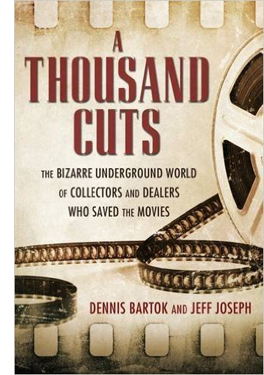 5mm with 16 in regular theatres, but soon the narrow gauge emerged as the format for nontheatrical screenings. Schools, churches, and colleges got war surplus 16 projectors. The Museum of Modern Art circulated classics in the format, and for newer items programmers could turn to Audio-Brandon, Janus, and other distributors.
5mm with 16 in regular theatres, but soon the narrow gauge emerged as the format for nontheatrical screenings. Schools, churches, and colleges got war surplus 16 projectors. The Museum of Modern Art circulated classics in the format, and for newer items programmers could turn to Audio-Brandon, Janus, and other distributors.
Many of those firms dealt in foreign titles, which weren’t as attractive to most collectors—who were in love with Gollywood. For them, the floodgates had already opened when the studios licensed their pre-1948 product to television. The 1950s and 1960s were very unlike the multi-channel 24/7 TV environment of today. The networks didn’t fill the broadcast day, and many independent stations tried to support themselves apart from the nets. So everybody needed what we now call content. Our colleague Eric Hoyt has traced in detail how C & C Movietime and other entrepreneurs bought rights to classics and not-so-classics and packaged them in 16mm bundles for local TV stations. Those prints were shown throughout the day and night, interspersed with commercials cut in by staff like Barry C. Allen.
In the 1950s hundreds of copies of film classics were abroad in the land. But many of these TV prints wound up discarded and scavenged by guys (almost always guys) who wanted to show them at home. Aficionados started building their own libraries.
Collecting 35 was tougher, but it could be done. Older films were stored in labs and depots. They might wind up in Dumpsters or be smuggled out by enterprising employees. Of course showing 35 was more difficult, but it wasn’t impossible to get 35 projectors fairly cheap, and if the hobbyist was willing to make major home renovations, he (again, almost always a he) could set up a personal screening room. Some went with curtains, masking, auditorium seats, popcorn machines, and other amenities. The idea of “home theatres” for ordinary folks has its origin here.
Acquiring 16mm was gray-market but ultimately not very criminal. Because of the First Sale Doctrine, a collector was not in violation if he bought a 16 print that had already been sold (to a TV station). If I buy the new Carl Hiaasen novel Razor Girl, I can sell my copy to you because someone sold it to me. What got 16mm dealers in real trouble was their zeal to copy prints. If they got access to a nice 35, they might make a 16 reduction; or if they had a decent 16, they might pull dupes. These were definitely illegal, as if I were to scan Razor Girl and sell you a pdf.
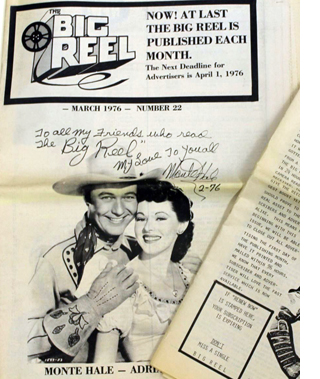 Mimeograph lists circulated by mail, but by the 1970s, collectors had their own periodicals, like Classic Film Collector and The Big Reel. To say that readers subscribed for the nostalgia pieces would be like saying you bought Playboy for the articles. The meat of the issues lay in the dealers’ lists, which might go on for pages. I well remember the rush to the phone after The Big Reel arrived each month. Once I called a Texas dealer who had advertised an untitled Japanese film. He was puzzled by its Irish name: The Life of O’Hara.
Mimeograph lists circulated by mail, but by the 1970s, collectors had their own periodicals, like Classic Film Collector and The Big Reel. To say that readers subscribed for the nostalgia pieces would be like saying you bought Playboy for the articles. The meat of the issues lay in the dealers’ lists, which might go on for pages. I well remember the rush to the phone after The Big Reel arrived each month. Once I called a Texas dealer who had advertised an untitled Japanese film. He was puzzled by its Irish name: The Life of O’Hara.
With some exceptions, 35 prints weren’t originally sold, only rented, and so possession of one suggested, to suspicious minds, big-time theft. Actually, most collectors’ prints had been junked, and you can argue that once something is tossed out, it’s the American Way to scavenge and recycle it.
Beyond the domestic collectors’ market, there was money to be made with 35 prints. American films didn’t circulate much in Cuba, South Africa, parts of Asia, and Eastern Europe, so there was an international demand for bootleg copies, and some dealers were happy to meet it. I lost out on a collection of Hong Kong films that was bought by an Indian dealer who intended to circulate them at home. I always think of that episode when I see the almost inevitable kung-fu fight in an Indian action movie.
The sale of 35 boomed because of another factor. With the rise of the blockbuster mentality in 1970s-1980s Hollywood, the nation was awash in theatrical prints. Then as now, a film might open on thousands of multiplex screens, play a few weeks, and be done. The studio would keep a few of those prints, but the rest would have to be disposed of. Salvage companies were contracted to destroy them, but—human nature being what it is—often some copies slipped out and into eager hands.
Films stored in laboratories or warehouses had a habit of disappearing as well, and prints shipped to theatres might be waylaid. I remember booking Blue Velvet and learning that the copy had disappeared in transit. The fact that prints were labeled with their titles printed in large letters probably didn’t help keep them safe. I was always startled to see the casual ways in which prints were handled. On Thursday midnights I’d leave a screening at one local theatre and see, neatly lined up on the sidewalk, shipping cases bearing the titles of films that had played there in recent weeks, waiting for a UPS pickup the next morning. After a theatrical run, exhibitors cared as little for prints as producers and distributors did.
Many collectors favored older titles, but others were as susceptible to blockbuster mania as general audiences. Star Wars, Jaws, The Godfather, and all the other top hits became as sought-after as Casablanca and Snow White. Collectors still boast of having multitrack, IB-Tech copies of 1970s and 1980s franchise pictures.
Enter the Feds
Los Angeles Times (17 January 1975), B1.
I’ve moved from describing the collectors’ market to describing the dealers’ market. That’s because they were almost one and the same. Collectors needed dealers to help find the rarities they yearned for; collectors started to deal to support their habit; and dealers, whether collectors or not, found that they could make money acquiring and selling movies. Demand and supply, in solid capitalist fashion, created an underworld traffic in prints.
The studios didn’t take this lying down. With the aid of the FBI, they pursued collectors, pressuring them to snitch on their suppliers and fellow addicts. Former child star Roddy McDowall, an avid collector, was the most visible target of these maneuvers. I well remember the chill that passed through the collector community at the news of the Feds’ raid on his house, which turned up hundreds of prints and videos. McDowall, who could probably have won a legal case, gave up many of his contacts. Charges against him were dismissed, but the U.S. Attorney pursuing the case warned that the activities of film collectors (said to number 65,000) “could constitute serious violations of both state and federal law.”
Most collectors flew under the radar, though. Although McDowall’s collection was mostly 16mm, the studios turned a blind eye to 16mm collectors. Famously, William K. Everson helped studios uncover lost films (e.g., obscure Fords and Stroheims) and as payment received 16mm copies of his discoveries. Collectors like Bill, who accumulated several thousand prints, shared their libraries with archives and film schools; at NYU, Bill taught from his collection for many years.
Home video didn’t destroy this underworld right away. The first video systems were of such poor quality that they couldn’t compete with 16mm projection, let alone 35. However, as formats improved in the 1990s, more and more collectors turned to video. Why thread up a battered copy of an MGM musical when a pretty nice DVD could just be popped into your player? With the arrival of Blu-ray, which can look very impressive projected in theatrical conditions, 35 began to be seen as more and more a retro hobby. And your average hobbyist was discovering that he (still almost certainly a he) was aging. Or dying.
The studios mostly lost interest in film-based piracy, once video presented a threat on a much bigger scale. Duplicating VHS and laserdisc, always imperfect, was followed by the cloning of perfect copies of DVDs. Now, of course, the main arena is the Net, where film piracy via BitTorrent has exploded to a level the old-timers couldn’t imagine. Back in the 60s, there were very few film collectors. Now, thanks to digital convergence and massive hard drives, everybody is a film collector—not only he’s.
Boom and busts
This is the world chronicled, with affection, humor, gossipy detail, and a pang of melancholy, in Dennis Bartok and Jeff Joseph’s A Thousand Cuts. Dennis has been head of programming for the American Cinematheque, and he currently heads the distribution company Cinelicious Pics. Jeff was one of the top film dealers in the country; at its peak, his company SabuCat sold about 1,000 prints per month. In the wake of the McDowall bust, Jeff became the only film dealer to serve time for selling prints. Jeff is now a distinguished archivist, conserving 3-D prints and, most recently, rare Laurel and Hardy movies.
The book lives up to its subtitle: The Bizarre Underground World of Collectors and Dealers Who Saved the Movies. Through interviews, documents, and vast knowledge of the world of film dealing, Bartok and Joseph have given us an invaluable survey of a wondrous land. It’s as gripping, and sometimes as hallucinatory, as any Forties B noir.
 Start with the cast of characters. Hugh Hefner, it turns out, was a huge collector, and not just of erotica. Probably today’s most visible collectors are Robert Osborne, of Turner Classic Movies, and the genial Leonard Maltin (right), who has lived in many worlds—fandom, mainstream publishing (thorough books surveying aspects of film history), and mass media (TCM, Entertainment Tonight, etc.). His obsession: shorts and cartoons. Men with an appetite for features include director Joe Dante and producer Jon Davison, whose collections continue to grow.
Start with the cast of characters. Hugh Hefner, it turns out, was a huge collector, and not just of erotica. Probably today’s most visible collectors are Robert Osborne, of Turner Classic Movies, and the genial Leonard Maltin (right), who has lived in many worlds—fandom, mainstream publishing (thorough books surveying aspects of film history), and mass media (TCM, Entertainment Tonight, etc.). His obsession: shorts and cartoons. Men with an appetite for features include director Joe Dante and producer Jon Davison, whose collections continue to grow.
Once we leave behind the celebrities, things take a more exotic turn. There’s Evan H. Foreman, the first collector targeted by the studios, a tough customer who fought for the right to sell prints and was called to testify before a Senate committee. There’s Ken Kramer, proprietor of The Clip Joint, a Burbank archive and screening facility decorated with posters and Christmas lights. There’s Tony Turano, who claimed for years that he was the baby in the bulrushes in The Ten Commandments. Tony kept his apartment heavily curtained, the better to preserve Claudette Colbert’s headdress and robe from Cleopatra (1934). Paul Rayton, projectionist extraordinaire, stores the cans for his rare Oklahoma! print in the back seat of his car. Not the film–it went vinegar long ago. Just the cans.
There’s Al Beardsley, uniformly considered untrustworthy, perhaps because he simply picked up a 70mm print of Lawrence of Arabia posing as a delivery courier and immediately sold it to a collector. Beardsley gave up film dealing for sports memorabilia, and became a participant in the O. J. Simpson throwdown in Vegas. As Beardsley recalls his encounter with one Thomas Riccio, who had set up the O. J. meet: “I had a drink and, I believe, a hamburger that Riccio paid for. He feeds you before he screws you.” O. J. was more direct: “Motherfucker, you think you can steal my shit and sell it?” Yes, firearms were involved.
This is as wild and crazy as any nerd culture can be. Like collectors of comic books and LPs, film mavens are clannish and wily, generous and secretive, boastful and yet somewhat innocent. These guys can’t be considered Geek Chic; they retain an unselfconscious love for what moved them in their youth. They live in the Adolescent Window, as we all do, but they don’t pretend to have become hip. And they run risks that other collectors don’t. A book or record collector runs no risk of arrest. But should a film collector offer a rarity to an archive? Will the studio claim it and bury it? Will the law get involved? Paranoia strikes deep, and justifiably.
Some of the tales are painfully funny, some just painful. This is the sort of book that contains sentences like:
The two were briefly partners as film dealers in the early 1970s, until Ken’s then-wife Lauren left him to marry Jeff, shortly after they were discovered having an affair at the 3rd Annual Witchcraft and Sorcery Convention.
Turano, wheelchair bound, had a habit of bursting into showtunes at the top of his voice. Tom Dunnahoo, of Thunderbird films, “routinely passed out on the floor of his film lab drunk on Drambuie.” A dealer takes pride in the fact that at his trial, the expert on the stand couldn’t tell his dupe of Paper Moon from the original. Another bit of dialogue:
“You remember I had a beet-red print of Giant? Well, Louie Federici ran it and borrowed a beautiful IB print of Giant. Afterward he sent it back to Warners, and you know what they got? A beet red print,” he says, face lighting up.
“You swapped it out?” Jeff asks.
“I did. And later I traded it to you for Singin’ in the Rain. How about that, huh?”
Nearly every page of my copy boasts my penciled ! in the margin.
Saving the movies
Jeff Joseph and Dennis Bartok, Cinecon 2016.
The book stresses that collectors functioned as preservationists. Just as in the early days of archives, they have saved films major and minor from destruction. Just last week, we learned that a collection of 9.5mm has added more footage to a partially surviving Ozu film, A Straightforward Boy. Famously, missing King Kong footage was discovered by a collector. . . and given, not sold, back to the studio. Tony Turano found a missing Fred Astaire number from Second Chorus in Hermes Pan’s closet. Jeff Joseph preserved color behind-the-scenes footage of Animal Crackers and found remarkable home-movie Kodachrome footage of Hitchcock, Bergman, and Grant out for a walk during the shooting of Notorious (surmounting today’s entry). Mike Hyatt has devoted his life to cleaning up The Day of the Triffids. Using a jeweler’s loupe and a needle, across many years, he flicked over 20,000 bits of dirt out of the camera negative.
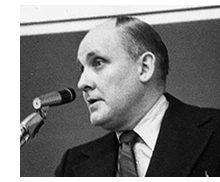 Every collector I’ve known has welcomed sincere interest in their holdings. In pre-video days, Bill Everson (right), unbelievably, loaned prints to undergrads for their papers. Kristin and I spent many nights at friends’ homes screening rare silents and unusual items, like a full-frame print of North by Northwest that showed the edges of the Mount Rushmore backdrop. Nearly every chapter of A Thousand Cuts recalls nights when the collectors would screen their rarities. Cutthroat they might be in dealing, they were often eager to share their treasures with those who’d appreciate them.
Every collector I’ve known has welcomed sincere interest in their holdings. In pre-video days, Bill Everson (right), unbelievably, loaned prints to undergrads for their papers. Kristin and I spent many nights at friends’ homes screening rare silents and unusual items, like a full-frame print of North by Northwest that showed the edges of the Mount Rushmore backdrop. Nearly every chapter of A Thousand Cuts recalls nights when the collectors would screen their rarities. Cutthroat they might be in dealing, they were often eager to share their treasures with those who’d appreciate them.
Most of the stories in the book come from the West Coast, as you’d expect. Other regions have their own lore and characters. The East Coast was a lively scene, centering on Manhattan’s Theodore Huff Film Society (duly noted in A Thousand Cuts) and Bill Everson’s screenings at the New School and elsewhere. Scorsese is, of course, a famous collector. Until this last year hard-core fans of old films gathered at Syracuse’s fine Cinefest. The Midwest had its own center of film trade, Festival Films in Minneapolis, now a source of public-domain items. The screening-and-dealing gathering Cinevent, in Columbus, Ohio, is entering its 49th year.
There were colorful personalities hereabouts too, including a Milwaukee collector with a stupendous array of original Hitchcocks from the 1950s. Another Wisconsin collector, Al Dettlaff, discovered and jealously guarded Edison’s 1910 version of Frankenstein. I met a collector in remote Minnesota who had converted his garage for 35mm screening both indoors and outdoors. He could aim his projectors to shoot out onto the back yard for neighborhood shows (a popular pastime for collectors). During the snowbound winters, he could swivel the machines to shoot through the kitchen to the living room. I asked how his wife felt about sawing holes in the walls. He said: “She’s fine with it. She knows I can get a new wife a hell of a lot easier than an IB Tech of Bambi.”
Dennis and Jeff are to be thanked for recording precious information about a phase of American film culture that has been neglected. They’re continuing the effort with a clip show on 23 September at the American Cinematheque’s Egyptian Theatre. It will include many items mentioned here, as well as a Bela Lugosi interview from 1931.
The collecting adventure is not quite over. The book profiles passionate younger aficionados, some of whom keep the energy going online. Still, as someone who has relinquished his passion for owning film on film and is happy that archives are taking over the task, I’m afraid it’s evident that the curtain is coming down. Without collectors, who will scavenge all the films not likely to be transferred to digital formats? The book ends with a list of six interviewees who died during writing and publication. And in the podcast below, Jeff glumly notes that studios are still junking prints.
Thanks to Jeff Joseph for illustrations. The Len Maltin picture is by Dennis Bartok. For a fascinating podcast that gives the authors a chance to expand on many aspects of A Thousand Cuts, check The Projection Booth. There’s a shorter streaming interview at KPCC radio.
Typical collector story: How did William K. Everson acquire his K? He told us that the first movie he remembered seeing was by William K. Howard, so Bill borrowed the middle initial. Another: We did our bit. After seeing an ad in The Big Reel for a hand-tinted Méliès print, we alerted Paolo Cherchi Usai, then at Eastman House. It turned out to be one of the lost Méliès titles.
Thanks to Haden Guest for tipping me to the Ozu rediscovery. I talk about how piracy created a classic here. For more on 16mm collecting and showing, go here and here. In this entry we cover Joe Dante’s remarkable visit to Madison and his presentation of The Movie Orgy, one result of his insatiable collecting appetites.
P.S. 14 September 2016: I should have mentioned another collector committed to preserving 3D films. Since 1980 Bob Furmanek has been building a large 3D archive, a project that is still ongoing. The history of his work is traced on his site.
P.S. 15 September 2016: Thanks to Christoph Michel for correcting a howler that out of shame I shall not name.
Animal Crackers, Multicolor on-set record (1930). Courtesy Jeff Joseph.













